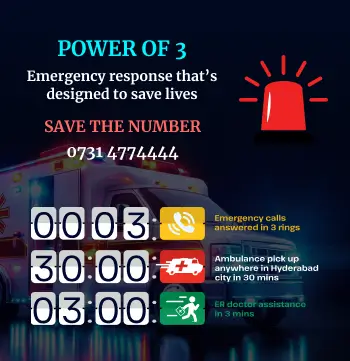Bradycardia
Most people know that a normal heart rate ranges between 60 & 100 beats per minute, but bradycardia occurs when the heart consistently beats fewer than 60 times per minute. This comprehensive guide explores what bradycardia is, its common symptoms, causes, and treatment options.

What is Bradycardia?
The human heart functions through a sophisticated electrical system, with the sinus node acting as its natural pacemaker. Located in the heart's upper right chamber, this group of specialised cells creates the electrical signals that initiate each heartbeat.
Bradycardia occurs when these electrical signals slow down or become blocked, resulting in a heart rate below 60 beats per minute. While this condition can affect any age, it is more prevalent in adults over 65.
The heart's normal functioning depends on four chambers working in harmony:
- Two upper chambers (atria)
- Two lower chambers (ventricles)
Not all cases of bradycardia are cause for concern. A slower heart rate can be perfectly normal for physically active individuals and athletes. However, bradycardia becomes a medical concern when the heart can't pump sufficient oxygen-rich blood to meet the body's needs.
Bradycardia Symptoms
When bradycardia affects the body's oxygen supply, it can manifest through various symptoms that impact both physical and cognitive functions.
For physically active individuals, particularly athletes, a lower heart rate might not cause symptoms as their hearts are naturally more efficient.
The following are common physical symptoms and signs of bradycardia:
- Shortness of breath, especially during physical activity
- Chest pain (angina)
- Extreme fatigue and weakness
- Heart palpitations
- Dizziness or lightheadedness
- Fainting or near-fainting episodes
The brain receives between 15% & 20% of the blood that flows from the heart, making it particularly sensitive to changes in heart rate. This explains why individuals with bradycardia often experience cognitive symptoms such as confusion, memory problems & difficulty concentrating.
Bradycardia Causes
Bradycardia can develop from various underlying conditions affecting the heart's electrical system. Understanding these causes helps doctors determine the most effective treatment approach.
The following are several reasons for bradycardia:
- Problems with the Sinoatrial (SA) Node: This is the most common cause of sinus bradycardia. The heart's natural pacemaker SA node can disrupt normal heart rhythm. This disruption often occurs through a condition called sick sinus syndrome, which becomes more common as people age.
- Medical Conditions: Several diseases that cause bradycardia are:
- Heart tissue damage from ageing or heart disease
- Inflammation conditions like myocarditis
- Electrolyte imbalances affecting calcium or potassium levels
- Hypothyroidism (underactive thyroid)
- Obstructive sleep apnea
- Rheumatic fever, lupus or other inflammatory diseases
- Infections like Lyme disease and Chagas disease
Risk Factors
Age plays a significant role in bradycardia development, with the condition becoming more prevalent in adults over 65. While younger individuals can develop bradycardia, older adults face a higher risk due to natural ageing processes affecting heart tissue.
Key Risk Factors Include:
- High blood pressure
- Complications from heart surgery, radiation therapy effects, and severe hypothermia
- Frequent stress and anxiety
- Heavy alcohol consumption
- Smoking
- Use of illicit drugs
- Certain medications, particularly heart medications (Beta-blockers, calcium channel blockers, and some antiarrhythmic drugs)
- Electrolyte deficiencies
Complications of Bradycardia
If left untreated, bradycardia can lead to potential health complications that may significantly impact a person's quality of life. Major Complications of Bradycardia:
- Frequent fainting (syncope)
- Heart failure
- Sudden cardiac arrest
- In extreme cases, sudden cardiac death
Diagnosis
During the initial consultation, doctors listen to the heart with a stethoscope and discuss the patient's symptoms and when they started.
- Electrocardiogram (ECG): The primary diagnostic tool is the Electrocardiogram (ECG), which measures the heart's electrical activity through sensors placed on the chest. This test provides immediate information about heart rhythm and rate, helping doctors identify any irregularities.
- For cases where bradycardia occurs intermittently, cardiologists may recommend various monitoring devices:
- Holter Monitor: A portable ECG worn for 1-7 days that continuously records heart activity
- Event Recorder: A wearable device used for up to 30 days, activated when symptoms occur
- Implantable Monitor: A tiny device placed under the skin for long-term monitoring
- Blood Tests: Blood investigations play a crucial role in diagnosis by checking for underlying conditions. These tests examine electrolyte levels, thyroid function, and potential infections.
- Specialised Tests:
- Tilt table test to observe how the heart responds to position changes
- Exercise stress test to evaluate heart rhythm during physical activity
- An echocardiogram helps assess the heart's pumping ability and overall structure.
Bradycardia Treatments
For individuals without symptoms, doctors may recommend monitoring the condition without immediate intervention.
When treatment is necessary, doctors typically follow a stepped approach:
- Lifestyle modifications and underlying condition treatment
- Adjustment or discontinuation of medications causing slow heart rate
- Correction of electrolyte imbalances
- Implementation of temporary or permanent pacing devices
- For emergencies where bradycardia causes dangerous symptoms, doctors may administer intravenous medications. Atropine is the primary medication, typically given in doses of 0.5-1.0 mg at 3-5 minute intervals.
Pacemaker Implementation: A significant advancement in bradycardia treatment is using pacemakers. These small devices are implanted under the skin near the collarbone and help regulate heart rhythm. Modern options include traditional permanent pacemakers and newer leadless versions, which are about the size of a large vitamin pill and can be implanted through a catheter-based procedure.
When to See a Doctor
Seek immediate care if you experience:
- Chest pain lasting more than a few minutes
- Shortness of breath or breathing difficulties
- Dizziness, lightheadedness, or fainting spells
- Symptoms that develop rapidly or suddenly worsen
Prevention
The American Heart Association recommends several key lifestyle modifications to help prevent heart-related conditions, including bradycardia. These evidence-based strategies focus on maintaining overall cardiovascular health:
- Engage in regular physical activity, such as a 30-minute daily walk
- Have a nutritious diet rich in fruits, vegetables, and whole grains
- Keep blood pressure & cholesterol levels in check
- Achieve and maintain a healthy weight
- Get adequate sleep (7-9 hours daily)
- Manage stress through relaxation techniques
- Stay properly hydrated
- Limit or avoid alcohol consumption
Conclusion
Bradycardia affects many people differently, from athletes who naturally maintain lower heart rates to individuals requiring immediate medical attention. People with bradycardia can lead normal, healthy lives through proper medical care and lifestyle adjustments. Regular check-ups, a heart-friendly diet, and consistent exercise help manage this condition effectively. The key lies in staying alert to warning signs and seeking medical help when symptoms appear.
Doctors now offer various treatment options, from medication adjustments to modern pacemaker technologies. These advances, combined with preventive measures like stress management and proper sleep, give patients better control over their heart health.
FAQs
1. Who does it affect?
Bradycardia primarily affects adults over 65 years of age, with approximately 1 in 600 individuals in this age group experiencing symptoms. While the condition can affect anyone, it's particularly common in two distinct groups: older adults and athletes. Young, healthy adults and trained athletes often have naturally lower heart rates without adverse effects.
2. How common is this condition?
The prevalence of bradycardia varies globally, affecting between 0.5% to 2.0% of the general population. Studies show that unexplained sinus bradycardia occurs in approximately 400 per 100,000 individuals worldwide. Interestingly, the condition affects men and women equally.
3. How does this condition affect my body?
When bradycardia occurs, the slower heart rate can impact various body systems. The primary effects include:
- Reduced oxygen delivery to vital organs
- Decreased blood flow to the brain
- Impaired physical performance
- Potential cognitive effects
4. When to worry about bradycardia?
Concern is warranted when bradycardia prevents the heart from pumping oxygenated blood to meet the body's needs. This condition typically manifests through symptoms like dizziness, extreme fatigue, or fainting spells. Athletes and young adults with naturally low heart rates usually don't need to worry unless they experience these symptoms.
5. Can being cold cause bradycardia?
Yes, cold exposure can trigger bradycardia. Research shows that cold weather causes blood vessels to narrow, causing the heart to work harder to pump blood. During cold exposure, the body may respond with a protective mechanism called cold-induced bradycardia, particularly noticeable during sleep or extended exposure to cold temperatures.




